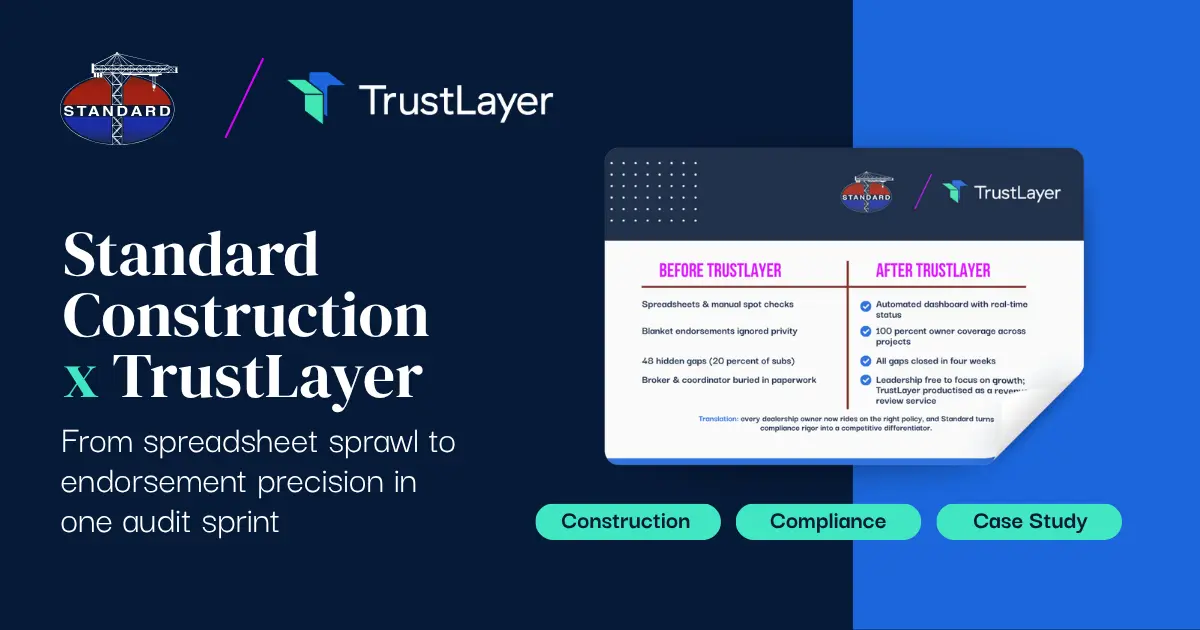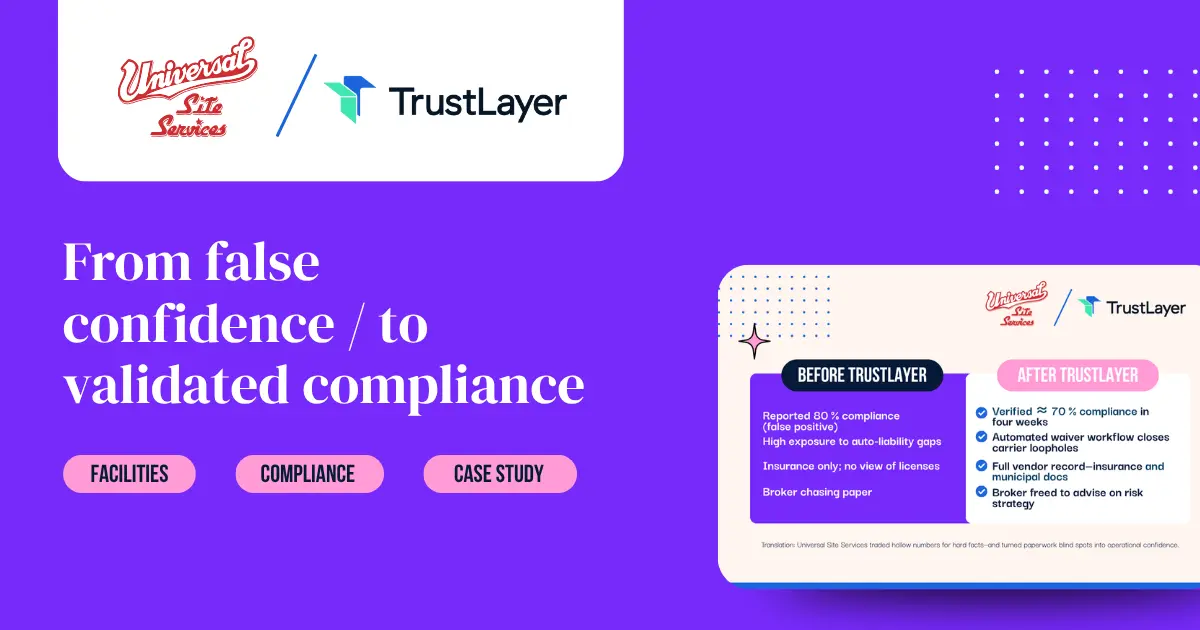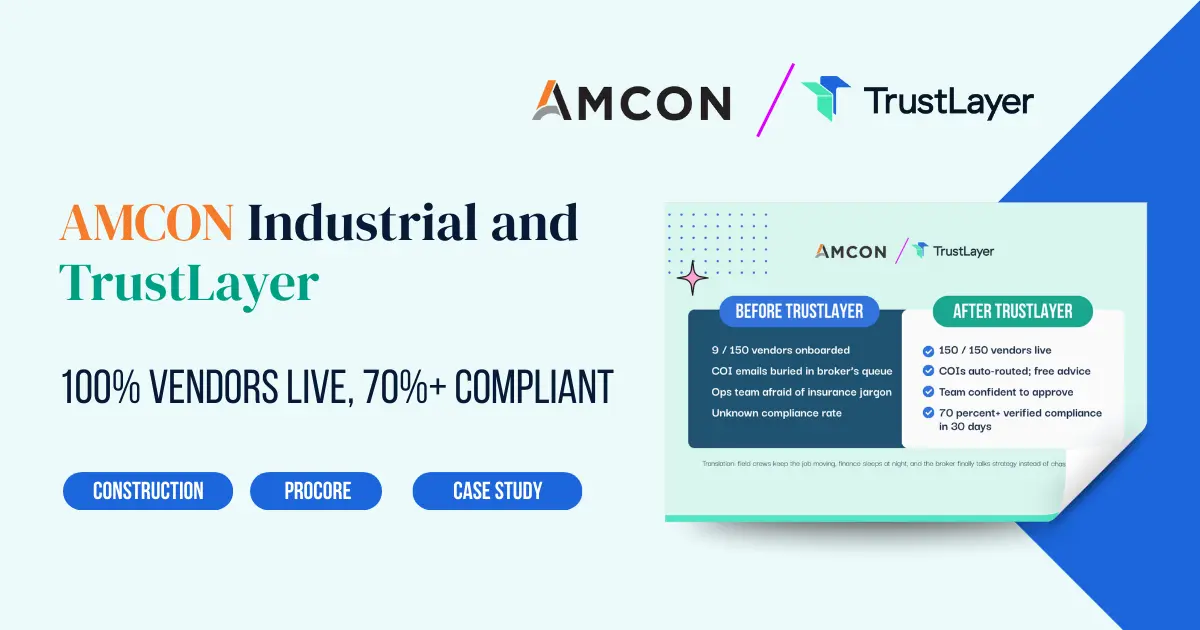The Benefits of COI Tracking Software
In today's fast-paced business environment, managing Certificates of Insurance (COIs) is more crucial than ever. Companies across various industries rely on COIs to ensure compliance and mitigate risks associated with third-party vendors and contractors. However, tracking these documents manually can be a daunting task, often leading to errors and oversights. This is where COI tracking software comes into play, offering a streamlined solution to manage these essential documents efficiently. This article explores the numerous benefits of utilizing COI tracking software for businesses.
Understanding COI Tracking Software
COI tracking software is designed to automate the collection, verification, and management of Certificates of Insurance. These documents serve as proof that a contractor or vendor has the necessary insurance coverage to protect against potential liabilities. By leveraging technology, businesses can simplify the COI management process, ensuring compliance and reducing risks. Moreover, the software can provide valuable insights and analytics, helping organizations make informed decisions regarding their partnerships and vendor selections based on their insurance status.
What is a Certificate of Insurance?
A Certificate of Insurance is a document issued by an insurance company or broker that verifies the existence of an insurance policy. It outlines the coverage details, including the types of insurance, policy limits, and effective dates. COIs are crucial for businesses that engage with contractors, suppliers, or service providers, as they provide assurance that these parties have adequate insurance coverage in place. Additionally, COIs often include endorsements that may specify additional insured parties or waiver of subrogation clauses, which can further protect the interests of the business requesting the certificate.
How COI Tracking Software Works
COI tracking software automates the process of collecting and managing COIs. Users can upload documents, set reminders for renewals, and track compliance in real-time. The software often integrates with existing systems, allowing for seamless data transfer and management. This automation not only saves time but also enhances accuracy, reducing the likelihood of human error. Furthermore, many COI tracking solutions offer customizable dashboards that allow users to monitor the status of all certificates at a glance, making it easier to identify any lapses in coverage or upcoming expiration dates. This proactive approach to risk management can significantly mitigate potential liabilities and foster stronger relationships with vendors by ensuring that all parties are adequately covered throughout the duration of their contracts.
Key Benefits of COI Tracking Software
Investing in COI tracking software can yield significant advantages for businesses. From improved efficiency to enhanced risk management, the benefits are manifold. Below are some of the most compelling reasons to consider implementing this technology.
1. Enhanced Efficiency
One of the most significant benefits of COI tracking software is the enhancement of operational efficiency. Manual tracking of COIs can be time-consuming and labor-intensive. With automated systems, businesses can streamline the collection and verification process, allowing employees to focus on more strategic tasks.
By automating reminders for renewals and expirations, the software ensures that no important deadlines are missed. This proactive approach helps maintain compliance and avoids potential disruptions in business operations. Furthermore, the integration of COI tracking software with existing project management tools can facilitate seamless workflows, enabling teams to manage their tasks more effectively while ensuring that all necessary insurance documentation is up-to-date and readily available.
2. Improved Accuracy
Human error is an inevitable part of manual processes. Misplacing documents, misreading information, or failing to update records can lead to significant compliance issues. COI tracking software minimizes these risks by automating data entry and verification.
Many software solutions come equipped with features that validate the information on COIs against industry standards and requirements. This ensures that businesses are not only compliant but also protected against potential liabilities associated with lapses in coverage. Additionally, advanced analytics tools within the software can provide insights into coverage trends and gaps, enabling businesses to make informed decisions about their insurance needs and adjust their risk management strategies accordingly.
3. Centralized Document Management
COI tracking software provides a centralized repository for all insurance documents. This means that all relevant information is stored in one location, making it easily accessible to authorized personnel. A centralized system eliminates the need for physical document storage, reducing clutter and the risk of losing important papers.
Moreover, having a single source of truth for COIs allows for better collaboration among teams. Whether it’s the legal department, risk management, or procurement, all stakeholders can access the necessary documents without delays. This centralized approach also facilitates easier audits and compliance checks, as all documentation is organized and readily available for review. Furthermore, many COI tracking solutions offer robust security features, ensuring that sensitive information is protected while still being accessible to those who need it, thereby enhancing overall organizational security and trust.
Risk Mitigation and Compliance
In today's regulatory landscape, compliance is paramount. Businesses must ensure that they adhere to various laws and regulations regarding insurance coverage. COI tracking software plays a crucial role in mitigating risks and ensuring compliance.
1. Proactive Risk Management
By utilizing COI tracking software, businesses can proactively manage risks associated with third-party vendors. The software allows for real-time monitoring of insurance coverage, ensuring that all contractors and suppliers maintain adequate insurance levels throughout their engagement.
This proactive stance not only protects the business from potential liabilities but also fosters a culture of accountability among vendors. When vendors know that their insurance status is being monitored, they are more likely to maintain compliance. Moreover, this vigilance can lead to improved relationships with vendors, as transparency in insurance requirements can enhance trust and collaboration. Businesses can also leverage this information to negotiate better terms with vendors who consistently demonstrate compliance, ultimately leading to cost savings and improved service delivery.
2. Simplified Compliance Audits
Compliance audits can be a daunting task, especially when dealing with numerous vendors and contractors. COI tracking software simplifies this process by providing easy access to all relevant documents and records. In the event of an audit, businesses can quickly retrieve the necessary information, demonstrating compliance with regulatory requirements.
Additionally, many software solutions offer reporting features that allow businesses to generate compliance reports with ease. This not only saves time during audits but also provides peace of mind knowing that the business is prepared for any regulatory scrutiny. Furthermore, the ability to track compliance metrics over time can help businesses identify trends and areas for improvement. By analyzing historical data, organizations can refine their risk management strategies and enhance their overall compliance posture, ensuring they remain ahead of regulatory changes and potential risks.
Cost Savings and ROI
While there is an initial investment in COI tracking software, the long-term cost savings and return on investment (ROI) can be substantial. Businesses can save money in several ways by implementing this technology.
1. Reduced Administrative Costs
Manual tracking of COIs often requires significant administrative resources. By automating this process, businesses can reduce the time and labor costs associated with document management. Employees can be redirected to more strategic initiatives, enhancing overall productivity.
Moreover, with fewer errors and oversights, businesses can avoid costly penalties and legal fees associated with non-compliance. The savings from reduced administrative costs can quickly offset the initial investment in software. In addition, the streamlined processes can lead to faster onboarding of new vendors or contractors, as the software can automatically verify and manage their compliance documents, further accelerating project timelines and improving cash flow.
2. Lower Insurance Premiums
Insurance providers often reward businesses that demonstrate effective risk management practices. By utilizing COI tracking software, companies can show insurers that they are proactive in managing their risks. This can lead to lower insurance premiums, as insurers may view the business as a lower risk.
Over time, the cumulative savings on insurance premiums can contribute significantly to the overall ROI of implementing COI tracking software. Additionally, having a robust COI management system in place can enhance a company’s reputation in the industry, potentially attracting more clients and business opportunities. Clients are increasingly looking for partners who prioritize compliance and risk management, and being able to demonstrate a strong commitment to these areas can open doors to new contracts and collaborations.
Scalability and Flexibility
As businesses grow, so do their insurance needs. COI tracking software offers scalability and flexibility, making it easier for organizations to adapt to changing requirements.
1. Adapting to Business Growth
Whether a company is expanding its operations, entering new markets, or increasing its vendor base, COI tracking software can scale to meet these evolving needs. Many software solutions offer customizable features that allow businesses to adjust their tracking processes as necessary.
This adaptability ensures that businesses can continue to manage their insurance requirements effectively, regardless of their size or complexity. For instance, a construction company that begins to take on larger projects may need to track multiple subcontractors' certificates of insurance simultaneously. COI tracking software can easily accommodate this shift, allowing the company to maintain compliance without overwhelming its administrative resources. Furthermore, as regulations change or new insurance products become available, the software can be updated to reflect these changes, ensuring that companies remain compliant and protected.
2. Integration with Existing Systems
Most COI tracking software solutions are designed to integrate seamlessly with existing business systems, such as project management tools, accounting software, and customer relationship management (CRM) platforms. This integration allows for a more cohesive workflow, reducing the need for duplicate data entry and enhancing overall efficiency.
By leveraging existing systems, businesses can maximize their investment in technology while ensuring that COI management remains a streamlined process. For example, when a new vendor is onboarded, the software can automatically pull relevant data from the CRM, reducing the time spent on manual entry and minimizing the risk of errors. Additionally, this integration can provide real-time insights into insurance statuses, allowing project managers to make informed decisions quickly. The result is not only improved operational efficiency but also a more proactive approach to risk management, as stakeholders have immediate access to the information they need to mitigate potential liabilities.
Choosing the Right COI Tracking Software
With numerous options available in the market, selecting the right COI tracking software can be a challenge. Businesses should consider several factors to ensure they make an informed decision.
1. User-Friendly Interface
A user-friendly interface is essential for ensuring that employees can easily navigate the software. Complicated systems can lead to frustration and decreased productivity. Look for software that offers intuitive design and easy access to features. A clean layout, clear icons, and straightforward navigation menus can significantly reduce the learning curve for new users, allowing them to focus on their core responsibilities rather than struggling with the software.
Additionally, consider how the software integrates with existing tools and platforms your team already uses. Seamless integration can enhance user experience by providing a cohesive workflow, minimizing the need to switch between different applications. This can lead to improved efficiency and a more streamlined approach to COI management.
2. Customization Options
Every business has unique needs when it comes to COI management. Choose software that allows for customization, enabling the organization to tailor the system to its specific requirements. This flexibility can enhance the overall effectiveness of the software. Custom fields, tailored reporting options, and adjustable workflows can all contribute to a more personalized experience that aligns with your organization’s goals and processes.
Moreover, consider the scalability of the software. As your business grows, your COI management needs may evolve. A solution that offers scalable customization options will allow you to adapt the software as your requirements change, ensuring that you are not left with a system that becomes obsolete or inadequate as your organization expands.
3. Customer Support and Training
Robust customer support and training resources are vital for successful implementation. Ensure that the software provider offers comprehensive training programs and ongoing support to assist employees in maximizing the software's capabilities. This support can come in various forms, including live chat, email assistance, and detailed documentation or video tutorials that can be accessed at any time.
Furthermore, consider the community surrounding the software. An active user community can provide additional resources, such as forums for sharing best practices, troubleshooting tips, and innovative ways to utilize the software effectively. Engaging with other users can enhance your team’s understanding and application of the software, ultimately leading to better COI management outcomes.
Conclusion
In an era where compliance and risk management are paramount, COI tracking software emerges as a vital tool for businesses. From enhancing efficiency and accuracy to mitigating risks and ensuring compliance, the benefits are clear. By investing in COI tracking software, organizations can streamline their operations, save costs, and position themselves for long-term success.
As businesses continue to evolve, embracing technology solutions like COI tracking software will be crucial in navigating the complexities of insurance management. The right software can empower organizations to focus on growth and innovation, knowing that their insurance compliance is in capable hands.
Ready to transform your COI management and embrace the future of risk mitigation? TrustLayer is here to revolutionize the way you track and verify compliance documents. Say goodbye to the administrative burden of manual processes and hello to a streamlined, automated system that saves you time and money. Join the hundreds of thousands of companies who have already elevated their risk management strategies with TrustLayer. Set up a time to talk with our team and discover how our industry-leading solution can empower your business to thrive in the modern world of risk management.
















